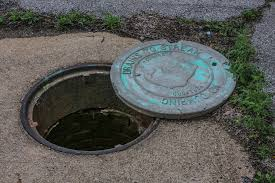IoT technology prevents exploding manhole covers
Published on by Water Network Research, Official research team of The Water Network in Case Studies
Every year in America’s biggest cities, hundreds of manholes will emit smoke, catch fire, or even explode.
 According to US utility firm, Con Edison, in New York alone there are more than 2,000 such incidents annually. While only a small fraction of a percent of the total events are explosions, they obviously represent the greatest risk to safety. The cables in New York have a wide distribution of ages from the 1930s through until today, with an average age of about 40 years. Moreover, the CE system is one of the largest underground electrical systems in the US, with more than 90,000 miles of cable and 267,000 manholes and service boxes. To manage this vast system safely and reliably, Con Edison relies on innovation.
According to US utility firm, Con Edison, in New York alone there are more than 2,000 such incidents annually. While only a small fraction of a percent of the total events are explosions, they obviously represent the greatest risk to safety. The cables in New York have a wide distribution of ages from the 1930s through until today, with an average age of about 40 years. Moreover, the CE system is one of the largest underground electrical systems in the US, with more than 90,000 miles of cable and 267,000 manholes and service boxes. To manage this vast system safely and reliably, Con Edison relies on innovation.
The root cause of these events is a combination of ageing power infrastructure, increasing urbanisation and severe weather events. For example, a mixture of melting snow and road salt can wash into manholes, leading to the electricity cables arching. This perfect storm has also been exacerbated by the trend for reactive maintenance, which only solves the issue after something has gone wrong. Traditionally, detection has been carried out manually, but with hundreds of thousands of manholes, it is impossible to do regular physical checks.
The problem has also grown in the UK in recent years where the same causes are starting to make an impact and the number of accidents rising. And the resulting consequences of explosions are not just restricted to lengthy and costly power cuts and damage to property but can also result in deaths from injury or even electrocution. A woman in New York was killed after coming into contact with an electrified metal plate after uninsulated wires carried a charge above ground, because salt, which is a conductor, had been used to grit the roads.
IoT comes to the rescue
At Plextek, we have been working with sensor specialist CNIGuard to develop a solution based on the internet of things. The system works by monitoring gas, stray voltages, arcing, salinity, temperature and humidity with embedded IoT sensors placed underground. The ruggedised sensors then transmit these signals to a dashboard on a smart phone, laptop or other device via radio, cellular, PSTN, fibre optic or satellite links. The system then uses powerful cloud-based analytics to identify and predict conditions that may result in an incident so preventative actions can be taken to avoid a potential disaster.
The first system has been installed by Con Edison in New York and by using sensors, the utility company is remotely monitoring gas levels, along with temperature and voltage related to equipment in their underground locations. The staff are able to view data regarding conditions on a daily basis, as well as generate alerts if conditions fall outside of acceptable thresholds.
Going underground
There are challenges surrounding the monitoring of conditions in underground structures. Rain and debris, as well as the highly conductive salt water in the winter from snow melt, all wash into them throughout the year so the area is wet and dirty and leaves, other debris and rats can cause damage to the sensors. To help mitigate this, the sensors are housed in a shoe box-sized, ruggedised container which also includes a cellular modem, cameras and a battery. It is designed to include temperature, carbon monoxide, accelerometer and pressure sensors, as well as enable the collection of infrared (IR) and visible images. The built in IR camera can pick up hot spots on cables so users know exactly where to repair the structure.
Taxonomy
- Sewer Networks
- Municipal Separate Storm Sewer System (MS4)